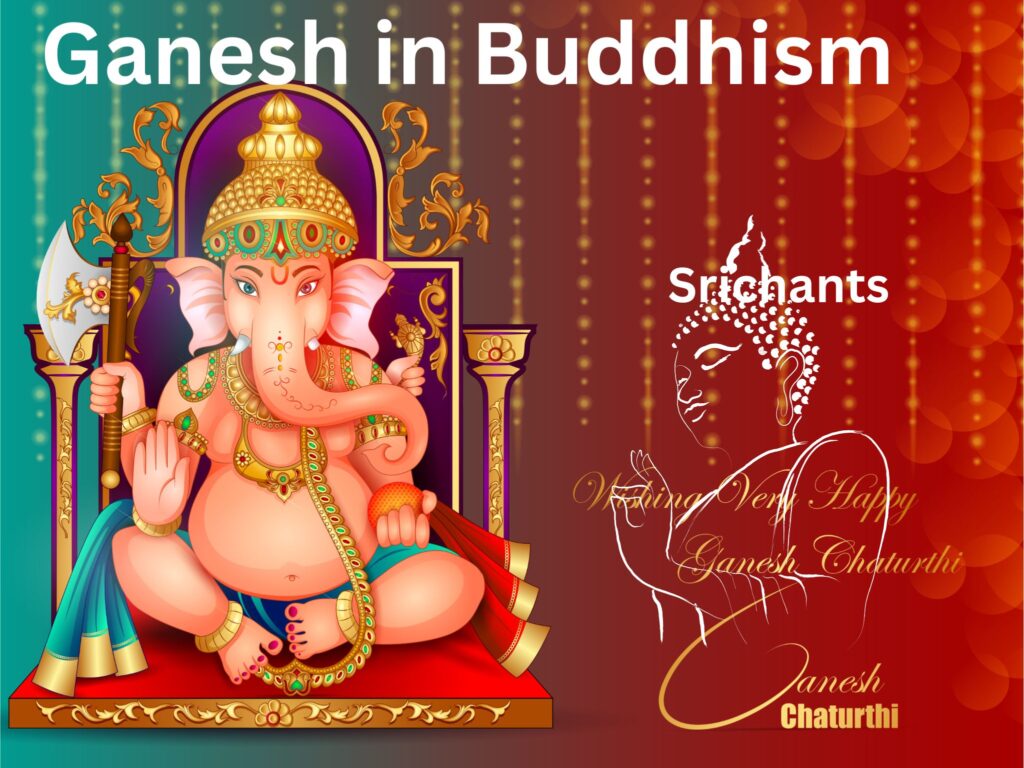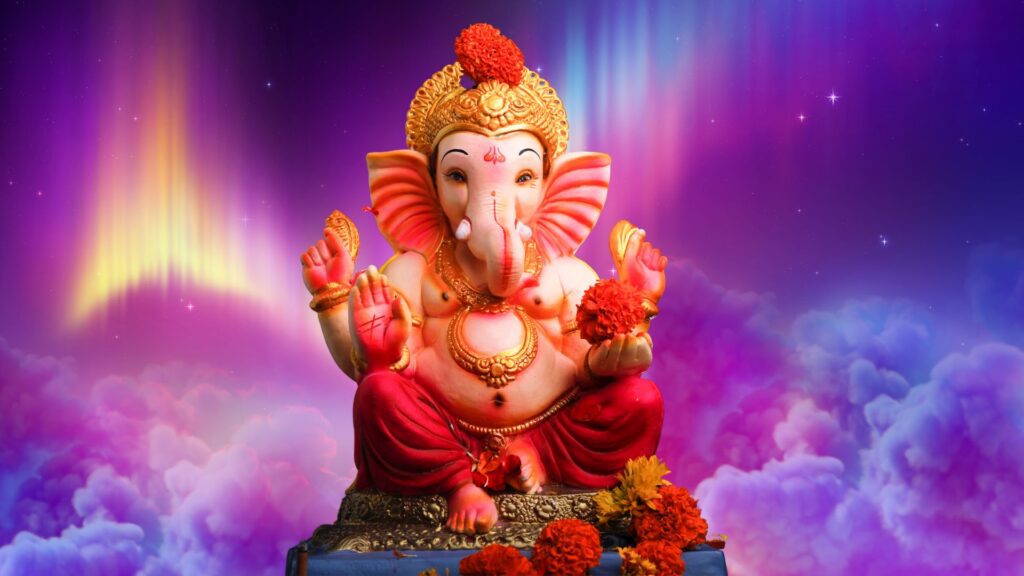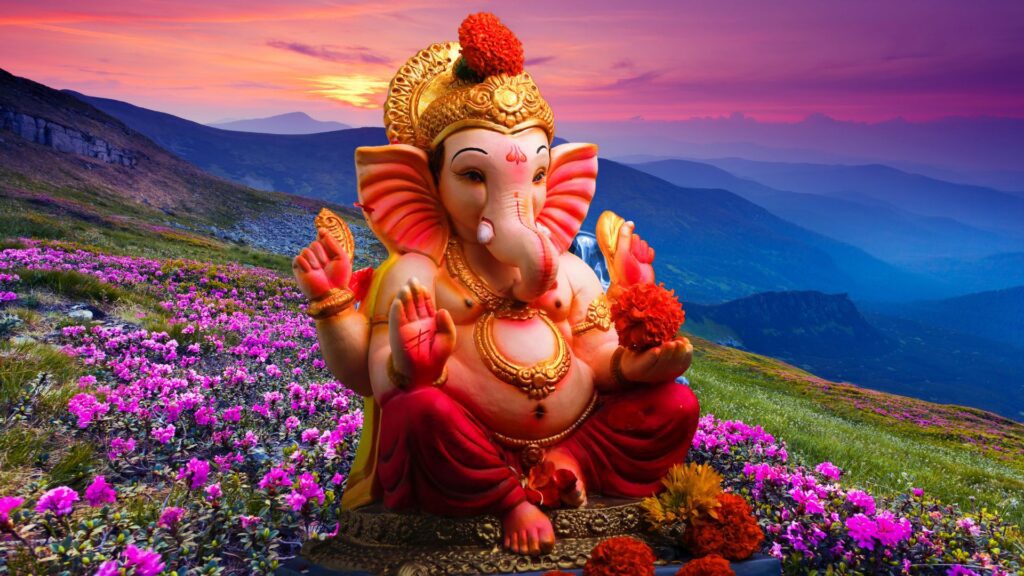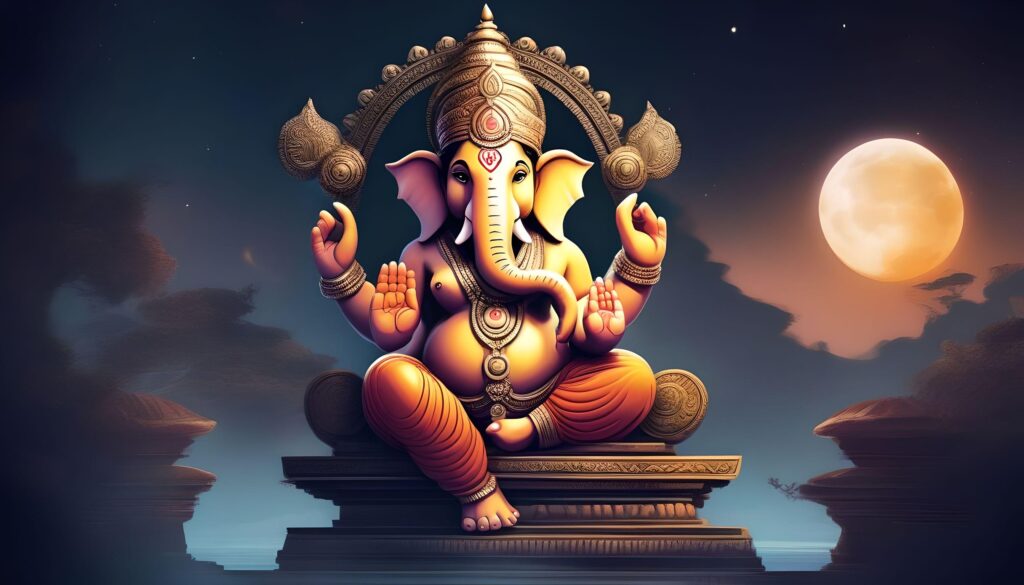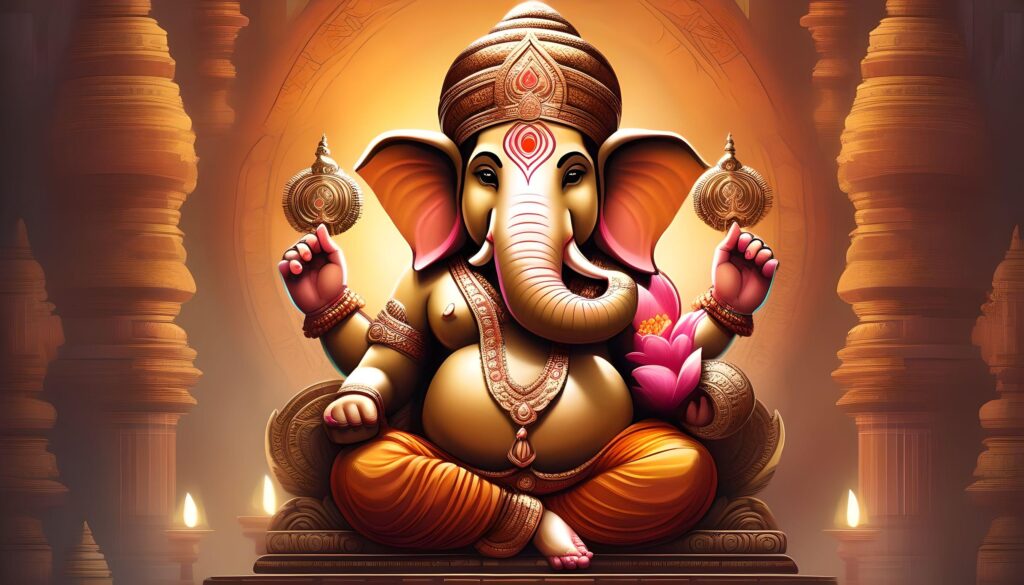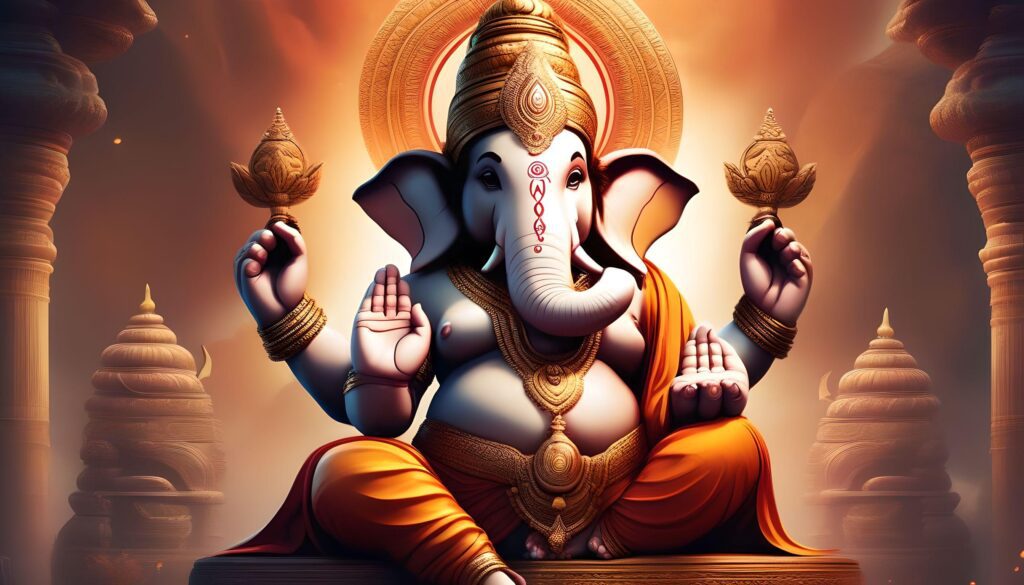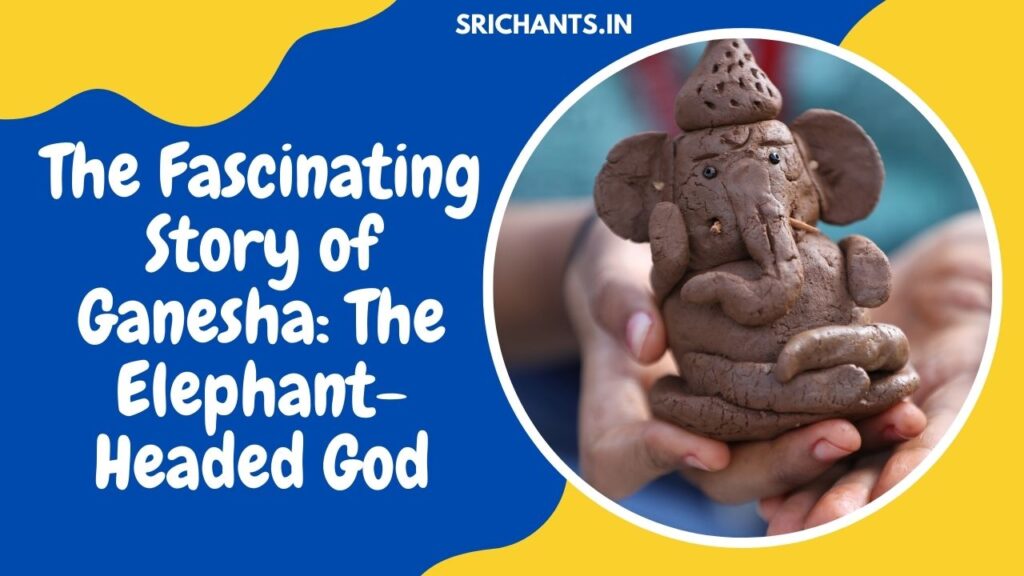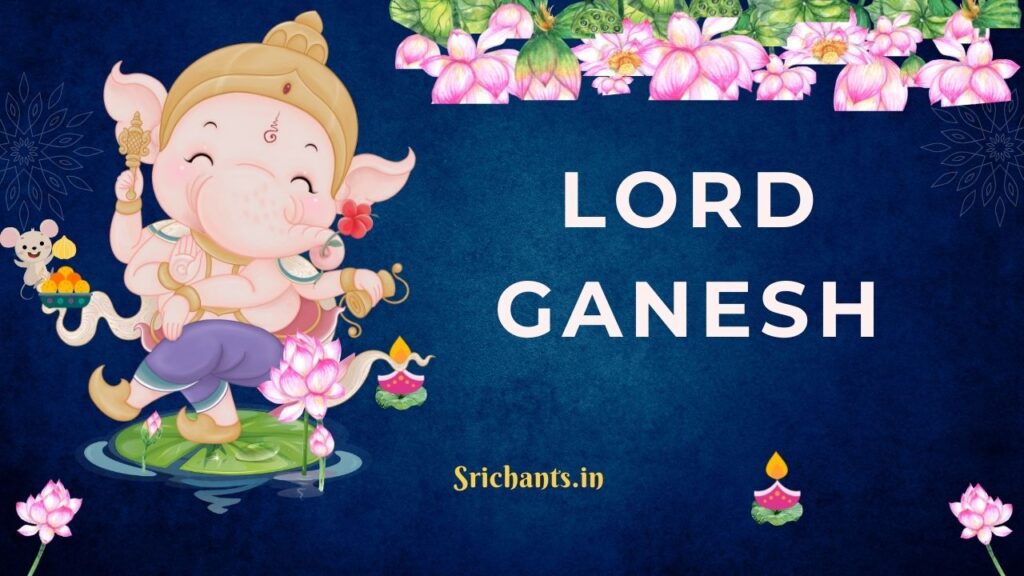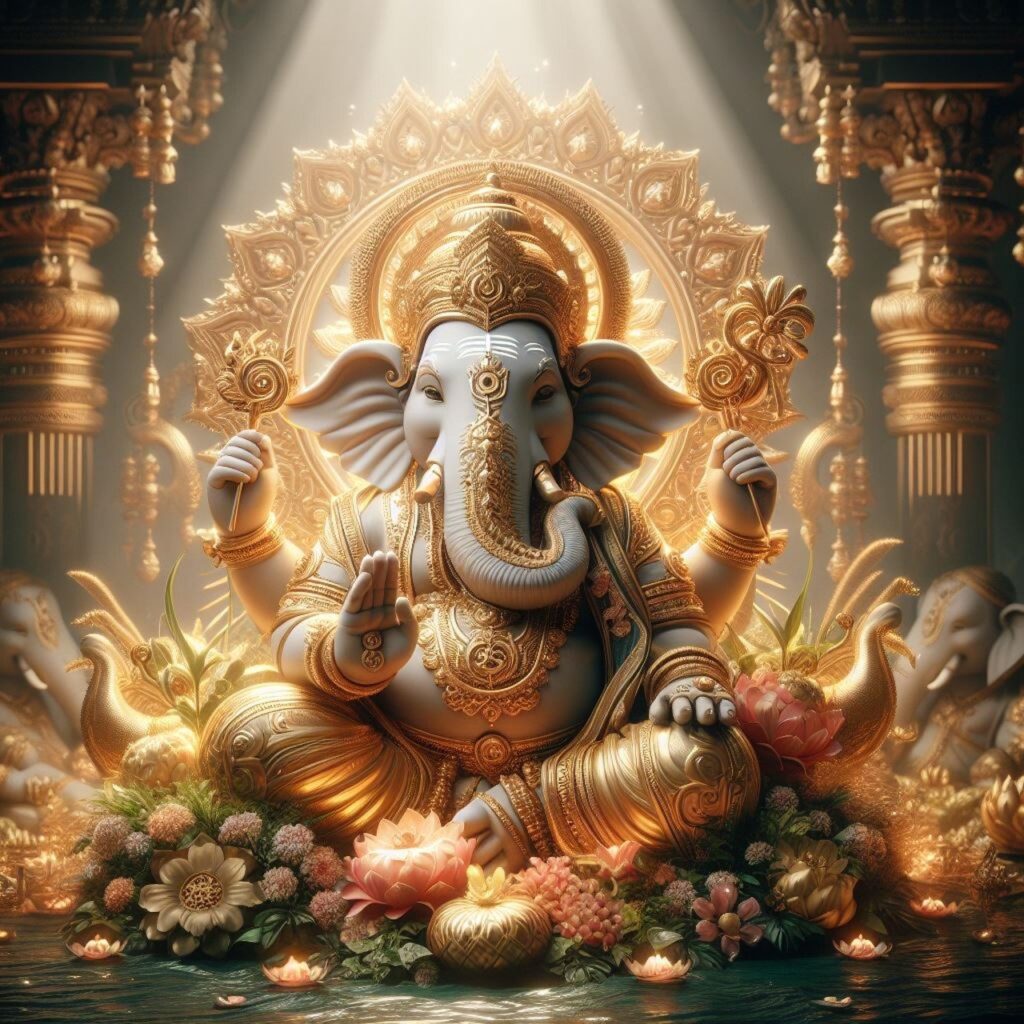Ganesh in Buddhism: A Harmonious Fusion of Deities in Buddhism
Introduction
Asia’s religious terrain is a multifarious tapestry of deities and beliefs, frequently bearing witness to the convergence of various customs. An intriguing phenomenon pertains to the integration of the Hindu deity Ganesh within the Buddhist faith. This symbiotic amalgamation serves as a testament to the fluidity of spiritual development and the capacity of customs to coexist.
This article aims to investigate the remarkable transition of Ganesh from Hinduism to Buddhism, scrutinizing the mechanisms through which this venerated being attained a status within the Buddhist pantheon. An exploration of the historical backdrop, the function of Ganesh in Buddhist iconography and art, and the symbolic import of his existence within the Buddhist faith will be undertaken.
Ganesh in Hinduism
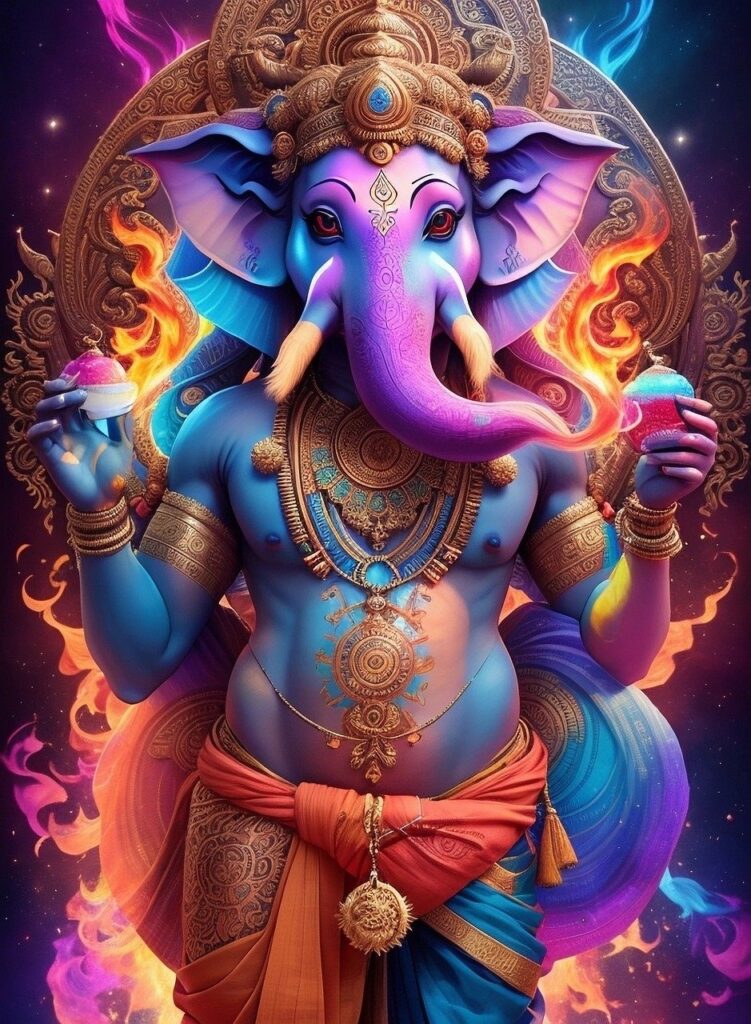
In Hinduism, Ganesh, the elephant-headed deity, occupies a prominent place. Hailed as the deity responsible for surmounting challenges and bestowing prudence and inception, his veneration is profoundly embedded within Hindu customs. Ganesh is a ubiquitous figure in numerous religious festivals and rituals, serving as a symbol of good fortune and prosperity.
Historical Context of Cultural Exchange
In the historical and cultural milieu of ancient India, Hinduism and Buddhism engaged in a substantial interchange of beliefs, practices, and concepts. The process of cross-pollination, which is frequently known as syncretism, enabled the amalgamation of rituals and deities from different religions. Local artistic traditions began to influence the depiction of Buddhist deities as Buddhism spread to various regions, paving the way for the incorporation of Ganesh.
Ganesh in Buddhist Art and Iconography
With the expansion of Buddhism, Ganesh became an integral component of Buddhist iconography and art. The portrayal of Buddhist deities was influenced by local artistic traditions that introduced regional flavors. Ganesh, renowned for his sagacious nature and ability to surmount challenges, was harmoniously incorporated into the visual narratives of Buddhism. Ganesh is portrayed in conjunction with Bodhisattvas and other celestial entities in certain Buddhist cultures, signifying the harmonious cohabitation of diverse spiritual traditions.
Ganesh as a Guardian and Protector
Ganesh is venerated as a guardian and protector of Buddhist practitioners in specific Buddhist traditions. His function in eliminating barriers corresponds to the Buddhist objective of surmounting impediments along the route to enlightenment. Devotees may seek Ganesh’s protection and guidance throughout their spiritual journey in order to ensure a seamless and obstacle-free voyage.
Symbolic Significance in Buddhism
The symbolic connotations linked to Ganesh align with fundamental tenets of Buddhism. His wisdom, intelligence, and capacity to surmount obstacles are in accordance with the fundamental principles of Buddhism. The elephant head is considered a representation of exceptional intellect, whereas the trunk of Ganesh is symbolic of adaptability, an attribute that holds great significance in Buddhist philosophy. The symbolism of his existence within Buddhist iconography functions as a poignant reminder of the universal truths and shared values that surpass religious confines.
Regional Variances in Worship
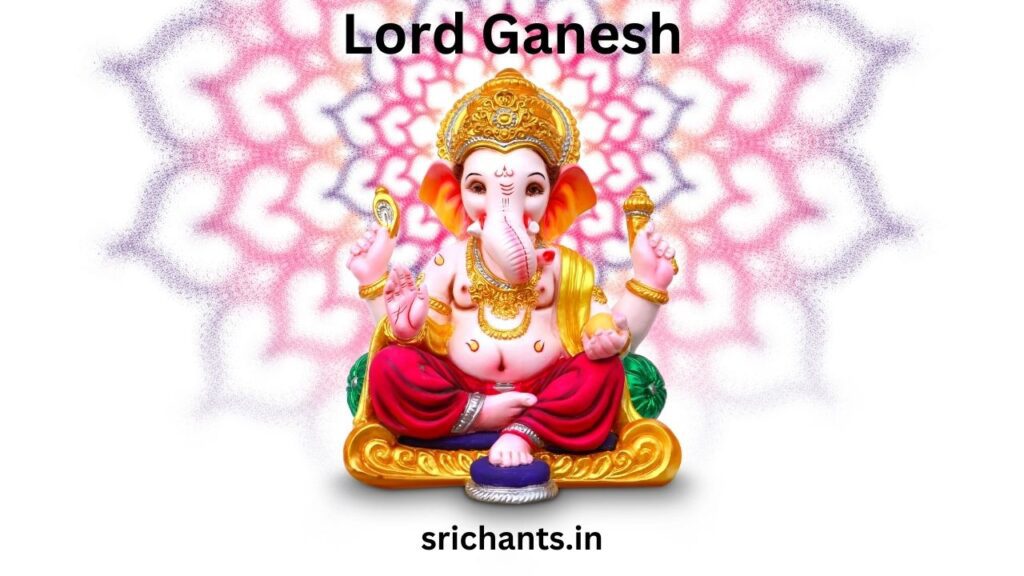
The manner in which Ganesh is integrated into Buddhism differs among Buddhist communities. Variations in the degree of acceptance and incorporation of Ganesh into the religious practices of distinct Buddhist sects and regions may be observed. Although certain Buddhist communities wholeheartedly venerate Ganesh, others may perceive his existence in a more symbolic or cultural sense. The existence of regional variations in Buddhism serves to underscore its profound diversity and the capacity for personal interpretation.
Shared Cultural Celebrations
In areas where Hindu and Buddhist communities coexist, Ganesh-themed festivals, including Ganesh Chaturthi, are occasionally observed by adherents of both faiths. The aforementioned communal cultural festivities stand as evidence of the cultural syncretism that has influenced the religious milieu of these areas. By exemplifying the principles of unity and mutual respect, they demonstrate the interdependence that exist among various religious practices.
Embracing Diversity within Buddhism
Recognized for its inclusiveness and tolerance of diverse faiths, Buddhism frequently makes room for an extensive variety of deities and rituals. The incorporation of Ganesh into specific Buddhist traditions exemplifies the inclusiveness and adaptability of Buddhism, wherein adherents are liberated to derive spiritual motivation from a multitude of sources. The adoption of diversity in Buddhist practice enhances its fabric and cultivates an atmosphere of unity and comprehension.
Conclusion
The existence of Ganesh within the Buddhist faith serves as evidence of the malleability and flexibility of religious customs. Buddhism, in its exploration of various territories, came into contact with a diverse array of beliefs that exerted a profound impact on its evolution. The seamless incorporation of Ganesh into specific Buddhist rituals serves as a testament to the interdependence of various enlightenment routes, the universality of knowledge, and the harmonious fusion of deities.
Asia’s spiritual landscape has been profoundly shaped by cultural syncretism and reciprocal influences, as evidenced by the incorporation of Ganesh into Buddhism. With the recognition of the complex relationship between Buddhism and Hinduism, Ganesh represents collective knowledge, universal principles, and the harmony that transcends diverse spiritual trajectories. His existence serves as a poignant reminder of the profound depths of human spirituality and the shared pursuit of enlightenment.
#ganesh #hinduism #buddhism #buddhist #faith
